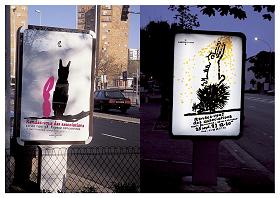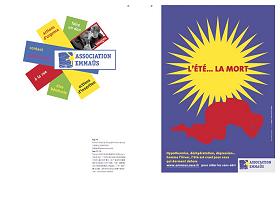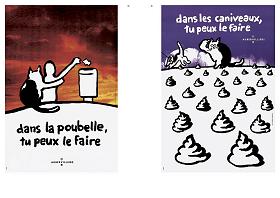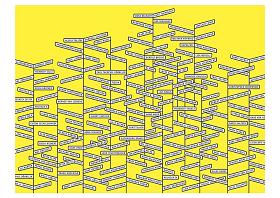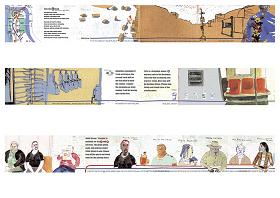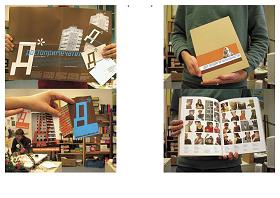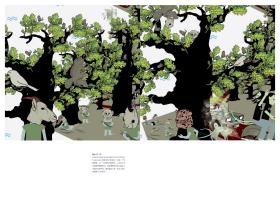|
Interview with Prof. Alex Jordan
1. You are a professor of graphic design, yet to me you are primarily a successful designer. Do you think these are two completely different careers? Which one means more to you? How do you compromise the teaching of graphic design and your own practice of it?
Maybe both together. But in modesty ask first was does it mean to be a
"succesful" designer; after all the question is how to introduce real
life in school-life, in universitary life.
2. During your educational communication with the students, has your work ever been influenced by the younger minds of design? If yes, in which respect is this so? How do you look at such an influence?
Young, old, that is not the question; better asks: why? and after that
only: how?
3. As an internationally renowned graphic designer, many of your works are regarded as classics. I’m curious about whether the strong individual style in your characteristic works has an influence on the artistic creations of your students. How do you take hold of this influence? If a student emerges with a style very similar to yours, how would you feel and what would you do?
I swear, I'm not. But first I feel familiar then I hope he will
overwhelm me.
4. With the rapid development of science and technology, it is inevitable that the application of new technologies enter the realm of design. How do you see the relationship between new-tech and the training of traditional basic skills in your teaching?
Don't see any contradiction; I only know that you can learn and learn
and learn... And sink like an overloaded ship. In fact I think, if I have a good
idea and I realize it with water colors and with my fingers, it's often
the best.
5. The idea of Globalization is very popular these days. Is graphic design gradually losing its native character and regional identity? May I know your attitude towards the concept of “nationality” in your design and teaching?
Maybe graphic design is losing a lot of particular expression; on the
one hand, I feel this development, on the other hand,
I know that there is a strong "resistance".
6. Speaking of Globalization, I always feel that people today are emphasizing speed more than creativity of design.
How do you understand “speed”?
Speed is a natural part of capitalism: make more profit in less time;
speed is only good if it's a "flash" in your brain (Geistesblitz).
Otherwise it produces bullshit most of the time.
7. Savignac used to say posters are children on the streets. In Europe, people tend to understand the poster as an art on the street. Then, what do you think of posters being exhibited and kept in museums? How much time and effort will you devote to poster design in your class schedule?
Ok! you know, posters on the streets have another impact than when they
are transported in museums. But if you put the posters in the showroom
context you have the possibility of direct aesthetical and sense
comparison. So you also have the possibility of pedagogical action.
Graphic design festivals life and the survive of that.
8. Do you have any specific requirement for design theories in class? What are the books that you usually recommend to your students?
Specific design theory? It sounds like the ridiculous groupie
statement; somewhere I am my own design theory.
9. How would you feel about the achievements and success of your students?
I am happy when they find their own way.
10. One last question, how do you define a "good designer" and a "good student" respectively? Thank you!
A good (product)designer doesn't design mass destruction weapons. A
good (graphic)designer doesn't help political and consumer terrorism.
A good student has not only good ideas but also the "talent" to bring
them to an astonishing,
practicable form.
Jianping He / April 2004
| 

